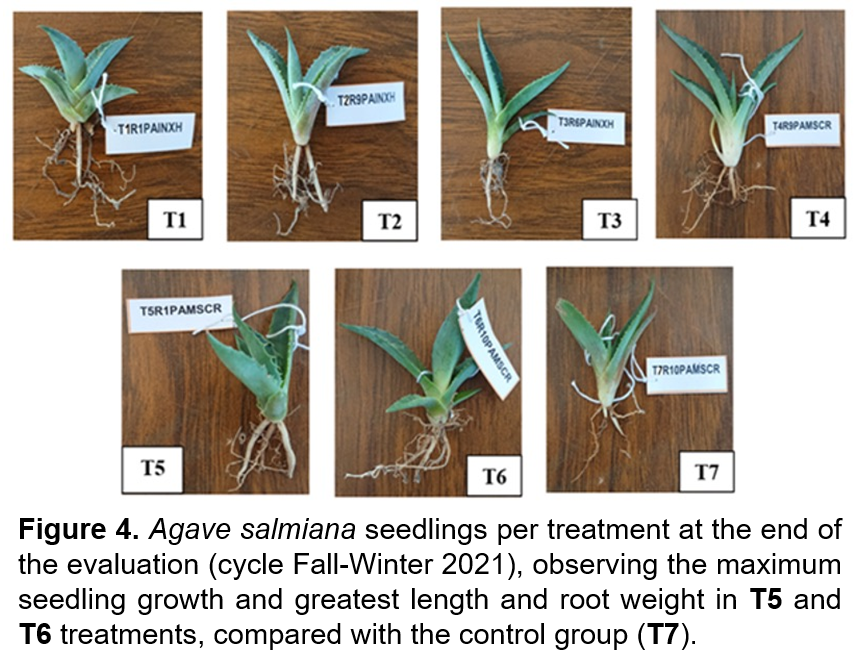Effect of Nitrogen, Phosphorus and Potassium on regional organic substrates in Agave salmiana production in Huichapan, Hidalgo, Mexico
DOI:
https://doi.org/10.56890/jpacd.v24i.511Palabras clave:
maguey, nutritional quality, plant physiology, productive soils, seedlingResumen
Mexico has 159 species of Agave spp. In the agri-food industry stand out are Agave tequilana, A. angustifolia, and A. salmiana. A limitation to producing maguey seedlings is the low availability of organic substrates that favor plant adaptation in the field. The objective was to evaluate the effect of nitrogen (N), phosphorus (P) and potassium (K) found in substrates in response to vegetative and root growth of A. salmiana in agricultural areas of Huichapan, Hidalgo, Mexico. The treatment consisted of earthworm humus (EH) and leaf compost (LC) substrates with materials from the region with different percentages of EH (100, 75, 50%), LC (5, 10%), and sand (20, 40%). The treatments were applied with 14 random replications in two phases in seeds and 40-day-seedlings. The variables evaluated were NPK amount and pH in substrates. The physiological variables measured were plant height, leaf number, stem diameter, root length, and volume. Significant differences (P?0.05) were observed in seedling physiology due to the effect of the treatment. The best agronomic responses (plant growth and root length/weight) of Agave seedlings were T5 (75% earthworm humus + 20% sand + 5% leaf-soil) and T6 (50% earthworm humus + 40% sand + 10% leaf-soil); in both treatments, the NPK percentages were different from the control (Haplic Phaeozem soil) group. The final concentration of NPK in T6 was N = 0.04%, P = 398.13 mg Kg-1 and K = 11.88 meq 100g-1. The results infer that NPK availability in soil and progressive acidification (initial pH = 8.6, final pH = 7.4) of the substrate can favorably influence the plant response. The interactions between NPK availability in the substrate and their use for a better response in maguey seedling adaptability open up new lines of research on the productive systems in the region of Huichapan, Hidalgo, Mexico.
##plugins.generic.pfl.publicationFactsTitle##
##plugins.generic.pfl.reviewerProfiles## N/D
##plugins.generic.pfl.authorStatements##
Indexado: {$indexList}
-
##plugins.generic.pfl.indexedList##
- ##plugins.generic.pfl.academicSociety##
- Journal of the Professional Association for Cactus Development
- Editora:
- Professional Association for Cactus Development




